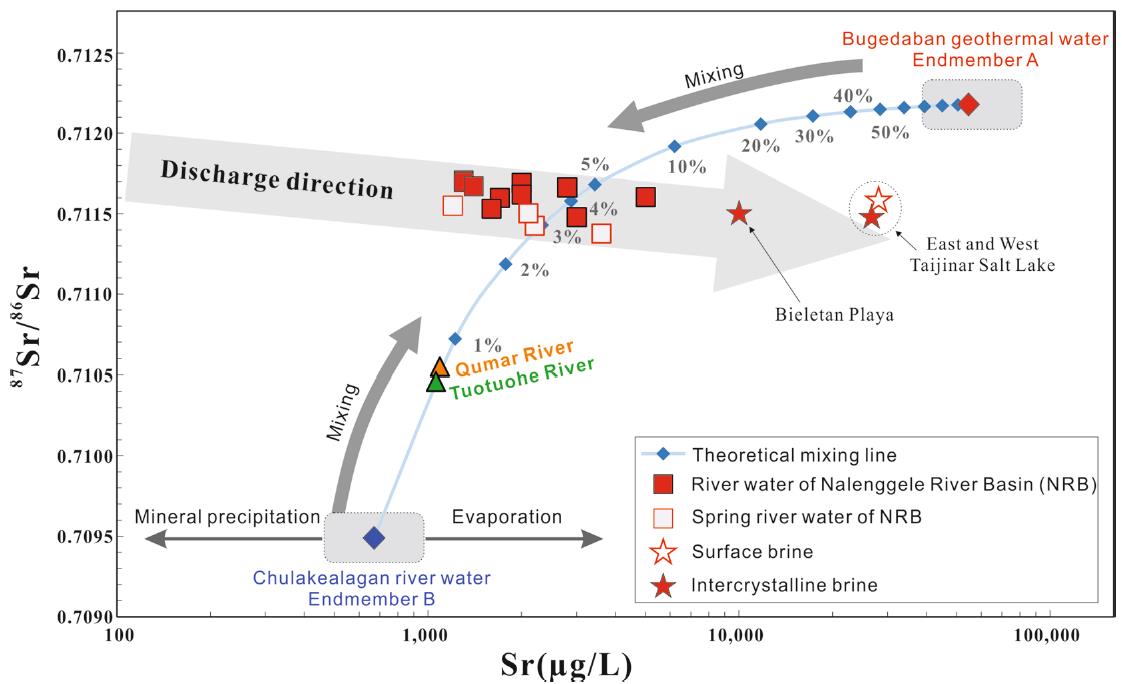The Qarhan, East-Taijiner, West-Taijiner, and Yiliping salt lakes (so-called “Four Lakes Area”) in the Qaidam Basin have highly enriched lithium resources. Although much work has been conducted to qualitatively understand the Li sources of these lithium-bearing brines, there is still a lack of quantitative assessment of the contribution of each Li-bearing end-member in the catchment. In addition, the key geochemical processes of dissolved lithium in the surface environment are also unclear until now. For these issues, systematic works were made in the area by the research team from the Laboratory of Geology and Environment of Salt Lakes, Qinghai Institute of Salt Lakes, CAS. The recharge water and dissolved lithium contribution of various end-members in the “Four Lakes Area” of Qaidam Basin were quantitatively explained for the first time. The results show that the hot spring water, which accounts for only 3~5% of total recharge water volume, provides 84.9~93.4% of the total lithium resources in the Nalenggele River Basin. From the Gobi to the salt lake region, the dissolved lithium in the Nalenggele River underwent significant kinetic fractionation due to different reasons during migration, and the adsorption of clay and Fe/Mn oxides in the sediment and the isolation during salt deposition are likely to be the main constraints. Furthermore, the remote recharge mode of hot spring water in the upper reaches of the Nalenggele River should be the main reason for the high Mg/Li ratio of the Tail Salt Lakes. These findings provide important evidence and research ideas for the genesis mechanism of Li-rich salt lakes on the Qinghai-Tibet Plateau. These findings were recently published in the Journal of Hydrology (IF=6.708) under the title of Lithium and strontium isotopic systematics in the Nalenggele River catchment of Qaidam Basin, China: quantifying contributions to lithium brines and deciphering lithium behavior in hydrological processes. Dr. Miao Weiliang is the lead author and Dr. Zhang Xiying is the Co-corresponding author. This study is supported by the Second Tibetan Plateau Scientific Expedition and Research Program (STEP) (2019QZKK0805), the Western Light Foundation of the Chinese Academy of Sciences (Grant to WL Miao), the Natural Science Foundation of Qinghai Provincial Science and Technology Department (2020-ZJ-765), and the Youth Innovation Cross Team of Basic Research Program of Qinghai Institute of Salt lakes, CAS (ISLJCTD-2022-2). Link address for full text: https://doi.org/10.1016/j.jhydrol.2022.128630 
Fig.1 End-member mixing model of Nalenggele River Basin in Qaidam Basin
|